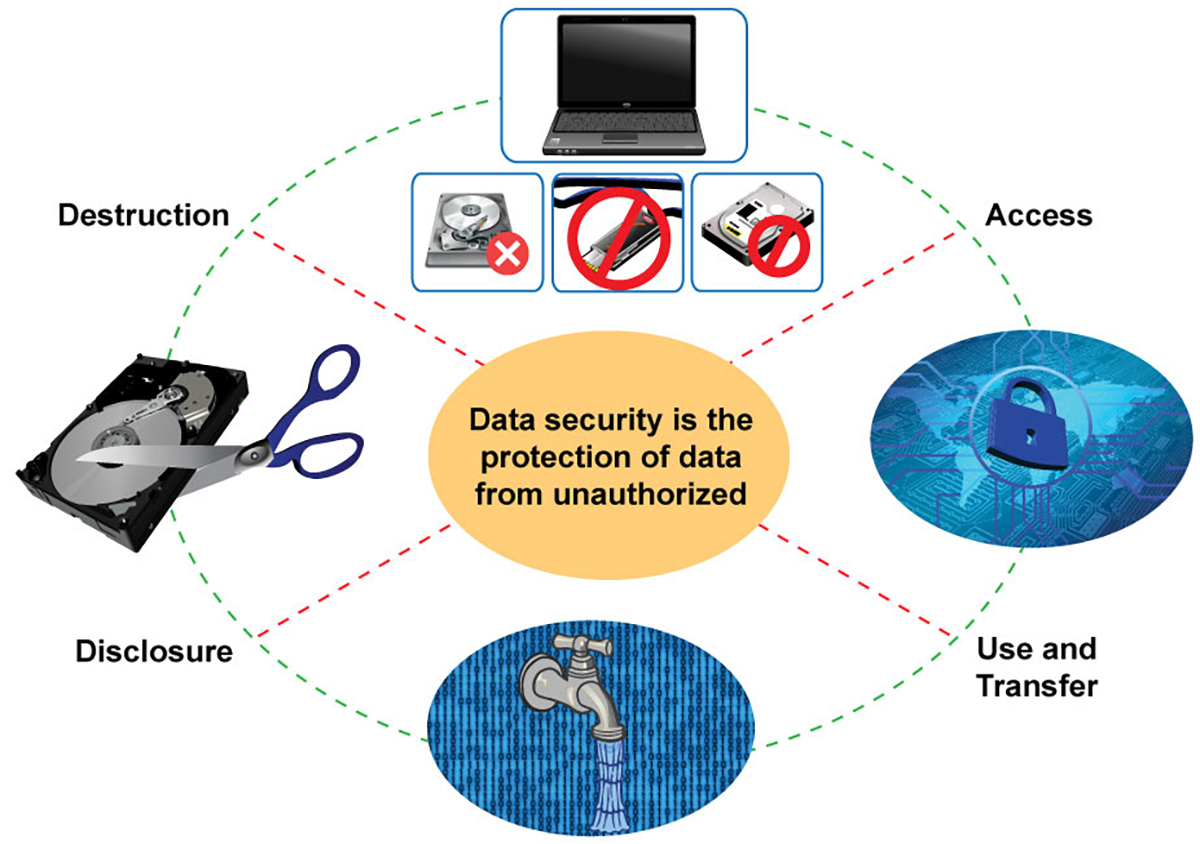How to Incorporate Data Destruction Techniques right into Your Cyber Security Approach
How to Incorporate Data Destruction Techniques right into Your Cyber Security Approach
Blog Article
The Importance of Effective Information Devastation Practices in Shielding Sensitive Information and Ensuring Computer Safety And Security
In an age where information violations are significantly common, the significance of efficient information devastation techniques can not be overemphasized. Organizations face significant risks when sensitive information is inadequately thrown away, possibly bring about unapproved access and severe financial repercussions. Implementing robust data destruction approaches not just mitigates these risks but also aligns with legal conformity needs, making certain that companies promote their online reputation and foster customer depend on. The concern stays: what particular strategies can be used to boost these methods, and exactly how can organizations effectively incorporate them into their overall cybersecurity structure?
Recognizing Data Devastation
Comprehending information damage is crucial in today's digital landscape, where delicate information can quickly be endangered. Efficient information devastation includes not simply erasing data however guaranteeing that data is irretrievable through comprehensive techniques. This procedure is crucial for companies that take care of personal client information, intellectual residential property, or inner documents, as any type of breach can bring about severe financial and reputational consequences.
Information devastation incorporates numerous strategies, consisting of shredding physical media, degaussing magnetic storage space gadgets, and employing software-based services that overwrite data several times. Each approach offers a specific purpose and needs to straighten with the sensitivity of the information being thrown away. For instance, physical destruction is frequently chosen for difficult drives consisting of very personal information, while software program approaches could be adequate for much less delicate details.
In addition, sticking to market requirements and policies, such as the General Data Protection Regulation (GDPR) or the Health Insurance Policy Transportability and Liability Act (HIPAA), is critical for conformity and to alleviate legal risks. Organizations has to create a durable data destruction plan, train workers on finest practices, and regularly investigate their treatments to make certain that all sensitive details is thrown away safely and effectively.
Dangers of Inadequate Practices
Inadequate information damage practices reveal organizations to substantial dangers that can have far-reaching effects. When sensitive details is not appropriately dealt with, it continues to be prone to unapproved gain access to, which can lead to information violations and identity burglary. Such events not just compromise the safety of people but likewise taint the organization's online reputation, causing a loss of client trust fund and potential monetary repercussions.
In addition, regulatory compliance is progressively rigorous in many industries. Failure to follow data damage regulations can cause large fines and legal activities versus organizations. These penalties can divert and stress economic sources attention from core company procedures.
In enhancement, the misuse of residual data can result in copyright burglary or company reconnaissance, jeopardizing competitive advantages (data destruction). The effect of insufficient information devastation expands past prompt financial losses; it can also result in long-term damage to brand stability and market setting

Organizations need to acknowledge that information safety is not only concerning protecting against violations; it additionally incorporates the liable monitoring of information throughout its lifecycle. Disregarding reliable information damage procedures can have devastating ramifications, highlighting the necessity for robust measures to reduce these dangers.
Best Practices for Data Destruction
Implementing reliable information damage methods is vital for protecting sensitive information and maintaining conformity with regulative requirements. Organizations should take on a multi-faceted strategy to make sure that data is irretrievable, thus preventing unapproved gain access to and prospective breaches.
First, information must be classified based on sensitivity, enabling organizations to use proper destruction weblink approaches tailored to the level of danger. For electronic information, using software-based data-wiping devices that follow industry criteria can efficiently overwrite existing information. Physical damage methods, such as shredding or degaussing, are vital for devices that save sensitive details, guaranteeing full elimination.
Establishing a clear data retention plan is important, detailing how much time different kinds of information need to be kept prior to destruction. Normal audits of data storage space systems are additionally required to recognize outdated or unnecessary data requiring removal.
Additionally, training staff members on the significance of information destruction and the particular methods to adhere to fosters a culture of safety within the company. Finally, preserving documents of data destruction refines gives accountability and supports conformity with external policies and inner plans. By adhering view it now to these best methods, organizations can dramatically minimize the threats related to information direct exposure.
Legal and Conformity Factors To Consider

Failure to abide by these policies can result in extreme charges, consisting of substantial penalties and reputational damage. Organizations needs to execute a durable data devastation policy that lines up with these lawful frameworks and supplies clear standards on the proper techniques of information disposal, whether physical shredding or electronic wiping.
Additionally, keeping documentation of data damage tasks is necessary for showing compliance during audits or assessments. By focusing on lawful and compliance factors to consider, companies can boost their information security pose and foster trust fund with customers and stakeholders, ultimately contributing to a site more protected data administration atmosphere.
Advantages of Effective Information Devastation
Reliable information destruction practices expand beyond simple conformity; they provide considerable advantages to organizations that prioritize them. By guaranteeing that sensitive information is irretrievably destroyed, organizations mitigate the risk of information violations and the possible monetary consequences related to them. This proactive approach not only safeguards versus unapproved gain access to but also boosts the total reliability of the company in the eyes of clients and stakeholders.
Applying durable data destruction approaches, such as physical devastation of storage devices or innovative information wiping techniques, adds to the conditioning of an organization's cybersecurity stance. data destruction. It minimizes the possibility of intellectual residential property theft and protects exclusive info, thereby keeping a competitive side on the market

Conclusion
In conclusion, effective information damage methods are vital for protecting sensitive information and boosting total computer safety and security. Ultimately, a dedication to robust data devastation methods promotes a culture of duty, thereby enhancing an organization's cybersecurity stance and preserving client trust fund.

Report this page